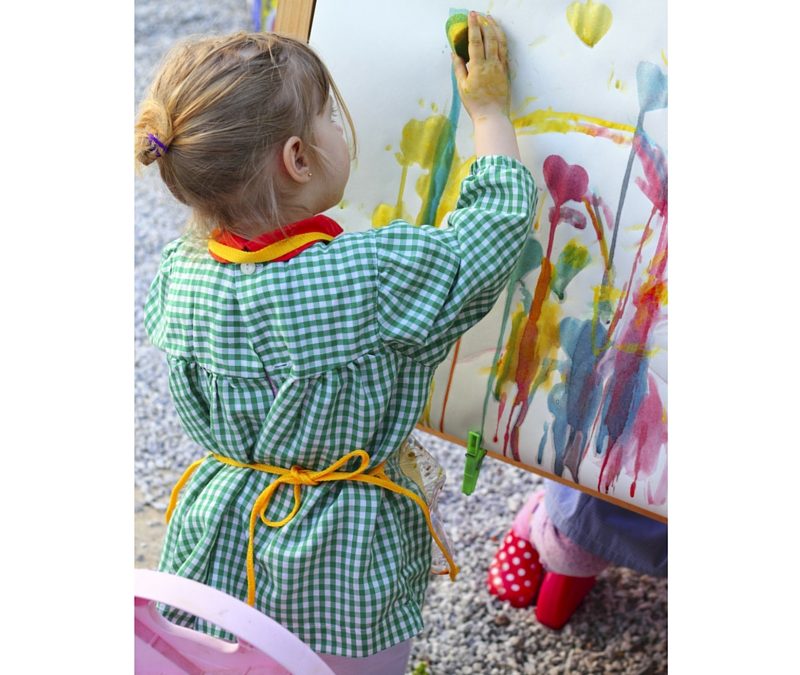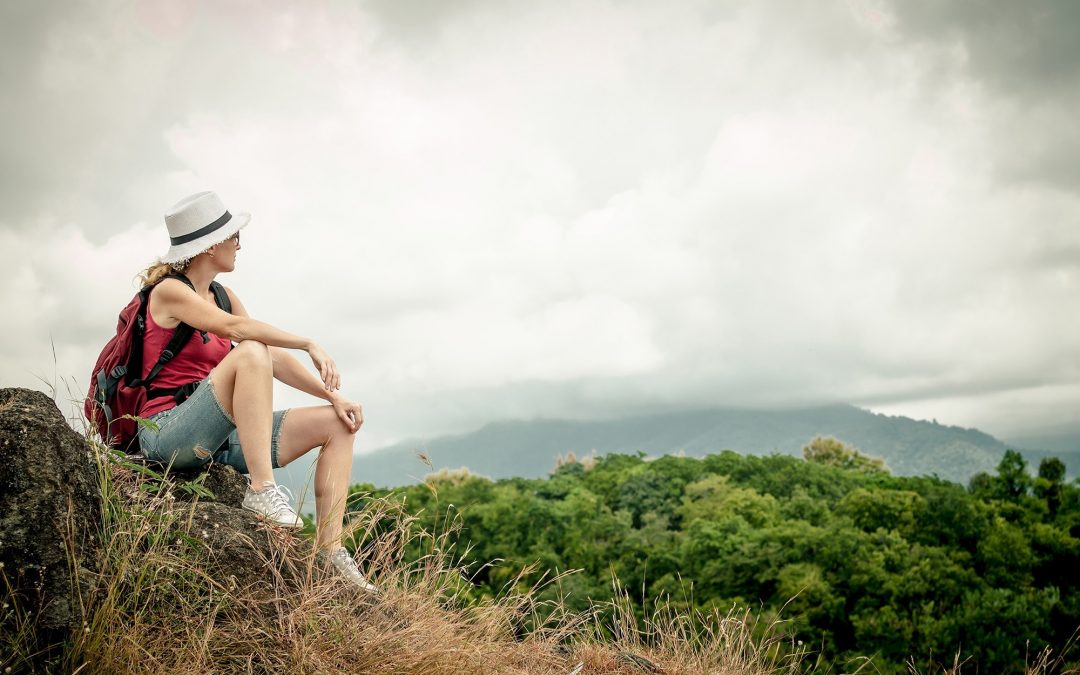
by pam | Nov 6, 2020 | Entrepreneurship, Feminine Leadership, High Achieving Women, Leadership, Women in Business
Have you ever interviewed a potential staff person or manager who on paper looked amazing, answered the questions thoughtfully, came to the interview well-groomed and appeared well-mannered and reliable? Your rational mind (left brain) thought “this a great candidate; I want to hire her or him”, yet there was something niggling that you couldn’t quite put your finger on. Something that didn’t feel right; yet you went ahead and hired that person. Three months after they started their position, you realized they were not a good “fit” for the organization. One of your organizational values was collaboration and they were extremely competitive to the point of withholding information from other team leads. On reflection, you realized that your body had told you this person wasn’t right for the organization and yet you let your head overrule your heart and did not listen to your body’s wisdom.
As women, many of us have been taught from a young age that in order to get ahead and be successful, we need to suppress our natural feminine qualities such as intuition. These feminine qualities have been undervalued in general in our families and by society and we have learned that in order to get ahead in business and in life that we need to assume the more dominant masculine qualities such as rationality and valuing logic over intuition.
The recent pandemic has shone the light on many aspects of our societies and organizations that are no longer working. It has reinforced the need for us to reconnect with our authentic feminine leadership qualities[1] such as intuition, collaboration and creativity[2] and recognize their value and importance.
As authentic feminine leaders how can we reconnect with those parts of ourselves that we have disconnected with based on previous feedback and experience? How can we learn to listen to and trust in our body’s wisdom?
- The first step is to believe that your intuition is a valuable quality and you can learn to access it and trust it. Dr. Bruce Lipton[3], a stem cell biologist, has done extensive research to show that the cells of our body are affected by our thoughts. This means your thoughts and beliefs biochemically affect your body and you have the power to change them.
Did you know that our heart and gut have nerve endings that send signals to our brains? The Heart Math Institute – https://www.heartmath.org – has done research showing the powerful influence our hearts and guts have on decision-making and strategic thinking.
- Become consciously aware of your body. Notice the feelings you are experiencing. For example; have you sensed tension and stress when you walk into certain environments or organizations? We often say “We could cut the air with a knife.” Have you noticed that when interacting with certain individuals you feel tense and can’t wait to leave their presence? These are examples of our bodies warning us and trying to keep us safe.
On the other hand, have you been with someone who makes you feel appreciated and valued in his or her presence? Our bodies are amazing receivers and transmitters of information. Integrating tools and strategies that bring conscious awareness into our lives enhance our leadership abilities.
- Learn practices and tools that help you get out of your head and into your body.
- Body Scanning – is a mindfulness technique from Eastern psychology that is rooted in Buddhist principles. Mindfulness teaches us to focus on feeling emotions and sensations in our bodies and notice what is going on in our minds. The practice helps us to focus and be present. Rather than thinking about the argument we had with our partner this morning or worrying about the performance review we are having this afternoon, instead we focus on the here and now.
Here’s an example of how to do body scanning. I find it helpful to do it in bed on awakening. It then “sets me up for the day”.
Sit comfortably, close your eyes, and take several deep breaths in through your nose and out through your mouth. Then return to regular breathing; in through your nose, and out through your nose.
From a state of open and relaxed awareness begin scanning your body from the top of your head to the tips of your toes. Notice any sensations you feel (without judging them) from your scalp, forehead, ears, eyes, nose, cheeks, and mouth. Then move down through the rest of your body. You may scan several times from head to toe in one sitting, or, after scanning once, attend to places in your body where you feel the most sensation. Experiment with this tool and find the process that is most useful for you. This may be done first thing in the morning and/or at night before you retire. It also may be done at various other times during the day.
- Spend regular time in nature – make a conscious effort to spend at least 30 minutes outdoors in nature each day if possible. Find a park, go for a hike or walk among trees or close to a body of water. Notice how your body feels when in the forest or by water. Focus on your senses rather than your thoughts.
- Practice yoga regularly (at least 3 times a week) – There are many types of yoga available. Experiment with different styles and find one that works for you. Yin yoga is a good place to start, especially if you have an active mind that rarely stops chattering. Yin has a meditative quality, is usually done in a warm room and involves holding poses for up to five minutes so that connective tissues loosens and energy blocks release. There are many studios who now offer classes online for minimal cost.
- Meditate daily (for at least 10 minutes) – You may be thinking: “I don’t have time to meditate”. That’s what I thought for many years until January 2013 when after almost burning out, I began meditating on a daily basis. I was and still am amazed by the benefits. Meditation enables me to be less reactive and more responsive in my interactions with others. I’ve noticed that at times it enables my brain to “split” so that when I’m engaged in an interaction, I also experience part of myself “sitting on my shoulder” observing the interaction. This provides me with the big picture and helps me stay calm and detached from the outcome. Daily meditation has enabled me to quiet my mind, freeing me from the chatter that is often not helpful in focusing and moving toward my goals.
- Nurture your body on a regular basis – I find it helpful to have a total body massage every 4 to 6 weeks with a trusted practitioner. Some massage therapists are also healers and energy workers and I ask them what they notice about my body. These massage therapists/body workers can help you go within and get in touch with what your body is telling you. They can also help release energy blocks that may be negatively impacting your body and decision-making.
Another strategy I’ve found helpful is to ask myself/my body “how can I nurture myself today?”, listen to what comes up and reward myself. It could be a bubble bath with candles and your favorite music playing, it could be curling up and reading your favorite book or poetry. Whatever it is, listen to the message and if possible, reward yourself.
This is a start. For additional evidence and tools to help you reconnect with your intuition and learn how to use your body to make wise decisions see Chapter 4 in my book Learning to Dance with Life: A Guide for High Achieving Women.
I welcome your comments below. What tools and strategies have helped you get in touch with your intuition? Do you agree that intuition is an important authentic feminine leadership quality?
[1] It is important to note that men can also possess and learn feminine leadership qualities.
[2] https://pamela-thompson.com/why-feminine-leadership-holds-the-key-to-creating-a-world-that-works-for-everyone/
[3] To learn more about Dr. Lipton’s groundbreaking work check out his book “The Biology of Belief – Unleashing the Power of Consciousness, Matter & Miracles” (2008) published by Hay House Inc.

by PT-clc | Mar 14, 2019 | Beliefs & Values, Change, Changemaker
As a heart-centered leader and/or changemaker, it is important to support others within your team and/or organization to embrace change. This may be easier said than done. Here are a few “tried and true” strategies.
- Openly
discuss upcoming changes; (e.g. new leadership, reorganization) and ask
people to share how they are feeling about the changes
- Communicate about the changes and openly discuss how they may impact you and your team
- Ask how
people would like to be supported during the change process. I so relate to
Brene Brown’s work, the examples she shares in “Dare to Lead”, and the
importance of scheduling “rumbling sessions” during times of uncertainty and change.
For example;
“These changes are coming hard and fast, and I know there is a lot of anxiety … I want to spend the next forty-five minutes rumbling about how we’re all managing the changes” (p. 35).
- Encourage
those team members who are uncomfortable with change to start slowly and
integrate small changes into their daily routines (e.g. drive to work a
different way, when dressing if they usually put their right leg into their
pants first, start with their left leg, try sleeping on the other side of the
bed … . Change is like a muscle; the more
you welcome change into your life, the easier it becomes. Ariane
de Bonvoisin in “The First 30 Days – Your Guide to Making Any Change Easier”
identifies six “change demons” and their antidotes. The six change demons are:
fear, doubt, blame, guilt, shame and impatience. She explains that the change
demons “help us navigate through change by alerting us if we are off course and
encouraging us to choose a different emotion to help us get where we want to
go.” (To learn more visit: https://pamela-thompson.com/can-reduce-fear-change-power-beliefs/)
- View embracing change as a creative process that opens us up to new possibilities (a foundational belief of my “Art of Change Framework”- https://pamela-thompson.com/2017/10/), and speak with your team about the value of internalizing this belief.
- Use the
change process as an opportunity to be creative and innovative and create
space and opportunities for team members to share innovative ideas. William and
Susan Bridges in their book “Managing Transitions: Making the Most of Change”
share some excellent examples of this.
I’d love to hear from you what strategies you’ve found effective to support others in your groups, teams and organizations to embrace change. I welcome your comments and ideas below.

by PT-clc | Aug 17, 2017 | Coping with Change, Embracing Change, Leadership, Powerful practices
What if we all viewed change as a creative process that opened us up to new possibilities? Do you think our relationships, workplaces, communities and the world would be different?
Let’s explore this perspective a bit further. Imagine if you were laid off. Instead of feeling angry, anxious and unsure of what to do next, what if you viewed the change as an opportunity to do something new, perhaps launch a new business you’d been thinking about for a few a few years, but had been afraid to start?
What if after a partner left you, you took the time to reflect on the relationship; what worked well and what didn’t? And, you took the time to write down all the lessons learned from the relationship as well as the qualities you wanted in a significant other and in a relationship? For example: someone who makes me laugh, who is a great communicator, someone who is physically active, and who loves being in nature? I did this a number of years ago and within 5 months of doing so my life partner and soul mate showed up who had all of the qualities I had written on my list!
Imagine if you were working in an organization that had a change in leadership, and instead of feeling uncertain and fearful, you viewed the change as an opportunity to learn and grow.
I invite you to “try on” this new perspective of viewing change over the next week and notice what you observe. It could be something as small as changing the way you usually respond to a person or situation. I welcome your comments and experiences below. Feel free to share this post with others who you think might benefit.

by pam | Jan 11, 2016 | Creative Living, Creativity, High Achieving Women, Proven strategies, Right brain, Women in Business

You may be thinking “creativity – I don’t have a creative bone in my body.” For many years I had the same belief, until some time ago I decided it would be fun to make pottery gifts for friends and family, so I signed up for classes at a local studio. I remember being in awe when the instructor did the demonstration and transformed a ball of clay into a beautiful object within a few moments. When I got my own ball of clay and started to create something on the potter’s wheel, I noticed the chatter leave my head. I got lost in the moment, felt like a child at play and was able to totally focus on what I was creating (otherwise there would have been a blob of clay on my wheel or on the floor!). And, the pottery bowls I made turned out surprisingly well.
Danny Gregory, in his book The Creative License (2006), states “the ability and need to be creative are hard-wired into all of us.” Often we don’t believe we’re creative, as we don’t see ourselves as musicians, painters or sculptors. Yet, if we examine our lives, we may find we’re creative at designing workshops, creating research projects, writing prose, cooking, dancing, gardening, coming up with “out of the box” strategies … .
So why is it important to connect with your creative side? When we connect with our right brains, we feel relaxed, it takes our mind off work, often we feel like a child at play. Research shows the value of the arts in promoting health and enhancing healing. Laura Cerwinske in her book Writing as Healing Art (1999) states that “the power of the written word stimulates the flow of emotions and readily opens the door to the subconscious.” She provides a number of processes and “assignments” for using writing as a way to heal ourselves and to tap into our creativity. Julia Cameron in The Artist’s Way: A Spiritual Path to Higher Creativity (1992) describes the importance of learning to “recognize, nurture and protect your inner artist (and in so doing)…you will learn ways to recognize and resolve fear, remove emotional scar tissue, and strengthen your confidence.”
Dr. Eugene Cohen’s[1] research demonstrates that creative expression is important for older people of all cultures and ethnic backgrounds, regardless of economic status, age, or level of physical, emotional, or cognitive functioning. His work and the programs of NCCA demonstrate how the arts can serve as a powerful way to engage elders in a creative and healing process of self-expression, enabling them to create works that honor their life experience.
What are the dangers of only using your left-brain, logical side and not taking the time to tap into your creative right brain? Gregory cautions that when we stifle our creativity “our minds grow narrower…we grow remote from others, categorizing and stereotyping the people we meet…we speed through life, wanting to get on to the next thing, unable to take pleasure in the moment.”
How do you tap into and express your creative side?
Sit down in a quiet place, free from distractions. Take a few deep breaths to relax yourself and close your eyes for a couple of minutes if you feel comfortable doing so. Ask yourself the following questions and write down your responses to them. Write down the first thing that comes to mind without judging or editing it.
- Are there any creative pursuits you did as a child but haven’t done for years? If so, what are they?
- Are there some creative or artistic pursuits you would be interested in exploring/trying out?
- Commit to either starting to integrate a childhood “passion” into your life or choose a new one such as “learning to play the piano” that perhaps you always wanted to do, but never took the time for or had the opportunity to do. Identify the next steps for taking action to integrate a new or “old” creative or artistic pursuit into your life. This could include: i) Do online research to identify people who teach piano locally and online by January 25, 2016. ii) Interview my top 3 piano teachers by February 10. ii) Sign up and commit to 3 months of bi-weekly piano classes by February 17.
- Support is important to many of us when starting something new and continuing with it. Enlist the support of a friend, colleague or family member to encourage and support you in your new endeavor, or invite them to join you in doing it.
To learn more about tapping into and expressing your creative side, I invite you to join me and 20 other experts at a fun, free online event “Juicy Life, Juicy You”. Check it out at: http://juicylifejuicyyou.com/PamThompson
What tools do you use to tap into and express your creative side? What benefits have you experienced from doing so? I welcome your comments below. Feel free to share this post with others.
[1] Eugene Cohen – founder of the National Center for Creative Aging (NCCA) – www.creativeaging.org

by pam | Oct 29, 2015 | Benefits of being in nature, Conscious Living, Creative Living, High Achieving Women, Inner Peace, Powerful practices, Stress Management, Work/Life Balance

I recently returned from a 3-day retreat where there was no cell service and no internet. What an unusual and blissful experience!
When my friend who I was driving with said there was no cell service at the retreat location, I initially felt some relief and then quickly thought of whom I should text to alert them.
When we arrived at the “spot”, a rustic building by the ocean, I started to relax and drink in the beauty of our surroundings. When I checked into my room, which was small, yet comfortable, I was intrigued by the monkey tree outside my window and felt blessed to have a room with a view of the ocean. For me, being by, in or on the water is where I feel most at home. At a Vision Quest a number of years ago, an aboriginal elder dreamt in my medicine name, which is “Laughing Otter Heart”. Initially I thought, that’s not as reverent as my friend’s name “Soaring Dawn Eagle”, yet it so connects me to the essence of who I am; to water, being in nature and my playful side. Now I smile when I think of it.
Within a short time of being at the retreat center, I felt all my cares melt away; my shoulders lightened, my mind quieted and I connected to my “being” side, (as I am often “doing”). I so enjoyed the three days of interacting with the other amazing women, facilitating my portion of the workshop and basking in the joy of being “unplugged” and in nature.
Did you know that the Japanese have done longitudinal research on the benefits of walking in forests? They have found that walking in forests strengthens your immune system, reduces your heart rate and your blood pressure. Based on these findings, they have institutionalized what they call “forest bathing” or “forest therapy” and have created a number of centers across Japan where people can go and walk in forests. How powerful is that!
With such busy lives and the associated stresses, regularly spending time in nature, and unplugging from technology are simple yet powerful practices that have amazingly positive benefits on our bodies, our minds and our relationships.
When was the last time you unplugged and spent time in nature? I welcome your thoughts and experiences below and invite you to share the post with others.






